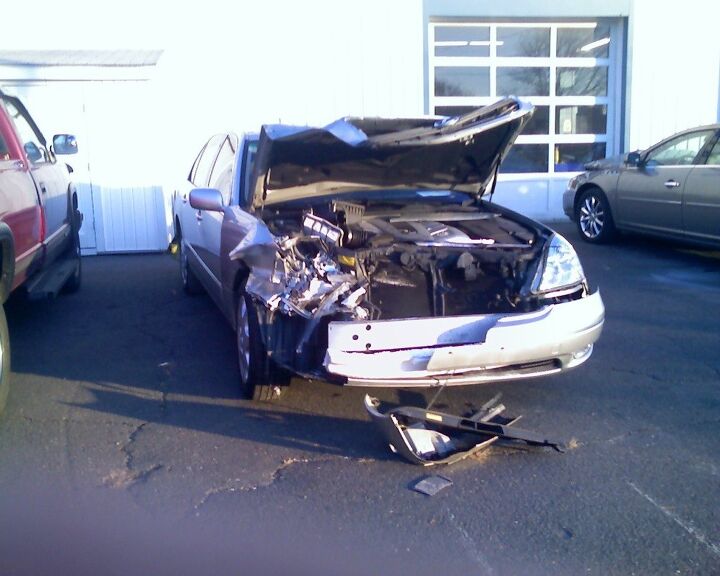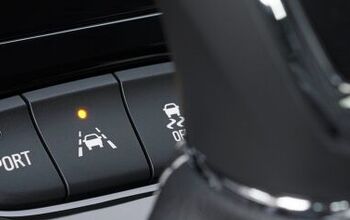How Safe Is Safe Enough?
There are some seriously mixed messages coming out of the NHTSA today, which perfectly illustrate what I like to call the tyranny of safety. On the one hand, the NHTSA announced today that overall traffic fatalities dropped by nearly ten percent in 2008, hitting the lowest levels per vehicle mile traveled since 1961. Estimates for the first quarter of 2009 show the high-single digit downward trend continuing into this year. In 2008, the NHTSA logged 1.27 fatalities per 100 million vehicle miles traveled. Which, based on the number of cars and the shoddy quality of driving one encounters in this country (sorry, it’s true), is a remarkable statistic. But, for safety nuts like SecTrans Ray LaHood, it’s not enough. “While the number of highway deaths in America has decreased, we still have a long way to go,” he tells his press release. And how are we going to go about protecting Americans from the lowest fatality rates since JFK was elected and the Beatles were still playing the Cavern? Gizmos, baby, gizmos.
The Detroit News reports that the NHTSA has planned a study for 2011 which will determine whether Forward Collision Warning and Lane Departure Warning Systems should be made mandatory for all vehicles. FCW uses radar to alert the driver to objects in the path of the car, and in some cases could even apply the brakes. LDWS alerts the driver to unintentional lane changes, and in some cases could automatically return the car to its original lane. Because apparently the 1.27 fatalities per 100 million vehicle miles traveled are caused by drivers being unable to see what is directly in front of them, and falling asleep and drifting across lanes.
According to the NHTSA, these features are currently available for Model Year 2008 on select Audi, BMW, Buick, Cadillac, Infiniti, Lexus, Mercedes-Benz, Toyota, and Volvo vehicles. Which means it won’t be that expensive to make them standard on all models, right? But the added cost would just be adding injury to insult. The argument that these features should exist on all cars knocks down any further impetus for improved driver training. Or paying attention to what lane you are in. Or looking out the windshield and noticing objects which may lie in the path of your vehicle.
How much intrusion and driver disengagement are we willing to endure to eliminate the last traffic fatalities? Will Secretary LaHood only feel that we no longer “have a long way to go” when drivers are as disengaged from their transportation as the patrons of his beloved rail transit? As long as busybodies try to completely eliminate danger from an inherently dangerous (yet satisfying) pursuit, the tyranny of safety will march on.
More by Edward Niedermeyer
Latest Car Reviews
Read moreLatest Product Reviews
Read moreRecent Comments
- Wjtinfwb My comment about "missing the mark" was directed at, of the mentioned cars, none created huge demand or excitement once they were introduced. All three had some cool aspects; Thunderbird was pretty good exterior, let down by the Lincoln LS dash and the fairly weak 3.9L V8 at launch. The Prowler was super cool and unique, only the little nerf bumpers spoiled the exterior and of course the V6 was a huge letdown. SSR had the beans, but in my opinion was spoiled by the tonneau cover over the bed. Remove the cover, finish the bed with some teak or walnut and I think it could have been more appealing. All three were targeting a very small market (expensive 2-seaters without a prestige badge) which probably contributed. The PT Cruiser succeeded in this space by being both more practical and cheap. Of the three, I'd still like to have a Thunderbird in my garage in a classic color like the silver/green metallic offered in the later years.
- D Screw Tesla. There are millions of affordable EVs already in use and widely available. Commonly seen in Peachtree City, GA, and The Villages, FL, they are cheap, convenient, and fun. We just need more municipalities to accept them. If they'll allow AVs on the road, why not golf cars?
- ChristianWimmer Best-looking current BMW in my opinion.
- Analoggrotto Looks like a cheap Hyundai.
- Honda1 It really does not matter. The way bidenomics is going nobody will be able to afford shyt.


































Comments
Join the conversation
After moving to the USA from Australia, where driving is remarkably similar: * Long distances travelled every day by loads of folks * Lots of near empty rural B roads with little enforcement and little attention to road design and maintenance * Similar levels of driver crappiness * Similar ages of car fleets * Somewhat similar mix of car sizes (we have lots of SUVs and large rear wheel drive sedans along with loads more hatchbacks and Euro oddities There are marked differences though: * We have uniform 35 year old seatbelt laws that are strictly enforced. Not wearing a seatbelt (driver or passenger) is expensive in $$$ and points to both the driver and the unbelted passenger. * Hand held mobile phone use is banned in all states since 2002. Hands free is now banned too, but not in every state yet (AFAIK). The fine is astronomical ($500+) and 5 points is harsh. If only it applied to make up application and other stupid things you see on the roads. * Our uniform BAC limit is 0.05 for most drivers and is strictly enforced for 30+ years with roadside blood and breath testing. It's 0.00 for newbie drivers. We now have roadside drug testing, too. This did more than seatbelts in terms of reducing our death toll. Still, folks die from booze every day. I think mandatory interlocks are the way to go for those who've been lost their license even for a 0.51 infraction. Once a drug user, always a drug user. * We are about have mandatory ESC and mandatory passenger airbags. We already have mandatory ABS and driver airbags. The government is already advertising on TV that you should not buy cars that do not have these features. The stats show that cars with these technologies are about 30% more likely to save your life than the same exact car without them. I've not had a car without them since 2001, and I'm never going back. * Unfortunately, we have speed cameras and photo laser / radar everywhere. I have to drive past 12 speed cameras between home and my nearest large city. It's pure revenue raising, and unrelated to safety. We have seen speed enforcement go through the roof and no consequential drop in roadside statistics since 2002. Our death rate per mile is about half the US rate. Yet, the folks who continue to be over representative in death statistics here are the young and stupid. They're about to make it illegal for folks under 21 to have passengers after dark, and probably not able to drive (i.e curfew) if you're a probationary driver after midnight til dawn to stop the massacre from the nightclubs. Unlike America, Australians drink too excess with actual alcohol and we like it that way. I really do think stopping the drink and drive culture is about the only way to stop young folks wrapping themselves around trees. There's a curvey bit of road in the hills near Melbourne that's responsible for about 40 motorcycling deaths every year, which is about 1/8th of our entire road toll. I would like that road closed to motorcyclists. But as most folks who die there are in their 40-50's, and thus the sort of voters that the government likes to pander to, I doubt it would happen.